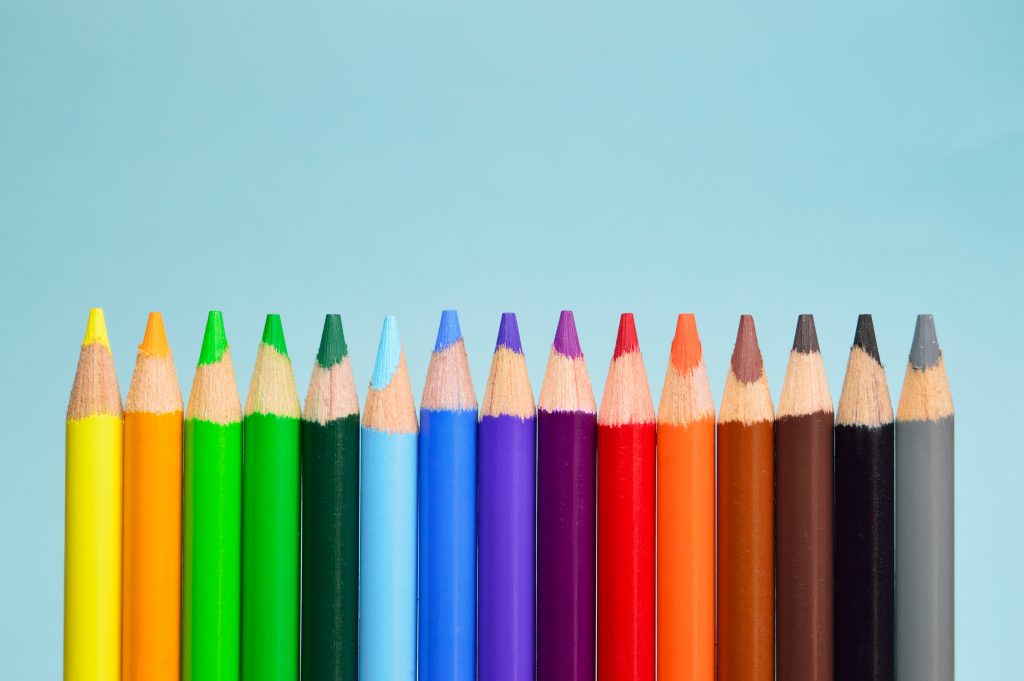What Color Therapy Can Do For You

Many people think rainbows are pretty, but most never consider that colors can have a huge impact on your mood and state of mind. Color therapy has been around for centuries and with it, you can use color to enhance your mood, help you learn, and inspire creativity. If you’ve never heard of this phenomena or want to learn more about what color therapy is, read on for information.
What is Color Therapy?
At its most basic level, color therapy utilizes the energy generated from each spectrum of color to resonate with different parts of your mind and body. This complementary therapy, also known as chromotherapy, can use electromagnetic radiation to affect healing for a number of diseases — from psychosis to premature births.
History of Color Therapy

There is evidence dating back centuries that ancient Egyptians, Greeks, Indians, and Chinese cultures used chromotherapy as a treatment for a number of illnesses. Since 2000 BC, cultures have been investigating color as medicine and using it, and the sun, to heal themselves.
While ancient cultures were unaware of the science behind chromotherapy, they linked it to their faith. Egyptians believed that the god Thoth discovered color healing, while for the Greeks, Iris was the goddess of rainbows. There is very little scientific explanation behind the use of primary colors for healing, but the blind faith of ancient peoples proved enough to ensure chromotherapy lasted well into the 21st century.
In the Victorian era, color therapy turned into mysticism that shied away from scientific experimentation. Due to this detour, many doctors and scientists consider traditional chromotherapy pseudoscience and have renamed any research in the direction or color and light therapy as photobiology.
How Color Therapy Works
Currently, chromotherapy is believed to affect the brain as well as the body. Light and color in tandem can stimulate different enzymatic and bacterial reactions that affect the biology of human beings. In fact, there is evidence that simple sunlight can kill bacteria and lead to the cleansing of wounds that have been exposed to the elements.
How is Chromotherapy Being Used?

Since color therapy is still a developing science, there are a number of experiments currently being conducted to learn more about the effects of light and color. Some research has been confirmed and is used on a daily basis among medical professionals, while other studies are ongoing and have positive results. Some confirmed and newly researched color uses include:
- Ultraviolet Light for Psoriasis Treatments
- White Fluorescent Light in Photosensitizing Drugs
- Light Pink to Calm Mania and Psychosis
- Blue Light for Premature Births (Replaced Blood Transfusions in Modern Medicine)
- Low Level Red Light for Blood Irradiation Therapy
- Infrared Saunas to Stimulate Collagen Production
Since colors inspire certain emotions in humans, many businesses use color to market themselves and their industry. Colors can make brands seem friendlier, make you hungry, or invite trust. Some of the most popular examples include:
- Food: Red and Yellow to Make You Hungry
- Security and Protection: Blue and White to Invite Trust
- Family Industries: Orange to Imply Friendliness
- Luxury Brands: Black to Convey Exclusivity
- Retail: Red to Incite Impulse Buying
- Medical Services: Green and Blue to Create Calm and Trust
- Communication Technologies: Bright Pink for Excitement
Not every shade of color works for either business or medical purposes — very specific hues must be implemented to create success in marketing and healing.
Studies About Color Therapy

Chromotherapy and photobiology are very popular fields of research and many interesting studies have been conducted in recent years. Some of the most fascinating span across a number of different uses and illnesses.
Better Learning Environments
Published in the International Journal of Biosocial Research, a professor was trying to test the effect of light and color on students attending schools in Edmonton. He replaced the wall paint, rugs, and lighting to reflect colors that would improve learning. Walls were royal and light blue, carpets were gray, and full spectrum lighting was used.
The results were astounding, as the children’s systolic blood pressure dropped by nearly 17%, and they were better behaved, more attentive, and fidgeted less. When the rooms were returned to their previous colors, the kids became rowdy and aggressive once again.
Calming Colors
At the San Bernardino County Probation Department, the staff frequently had to deal with manic and psychotic children. In an attempt to pacify and calm the kids without restraints or violence, the staff would take an aggressive child to a small room that was painted in bubble gum pink.
Once in the pink room, children would relax, stop yelling and banging, and fall asleep — often within 10 minutes. Since implementing the pink room method in San Bernardino, over 1,500 hospitals and correctional institutions throughout America use them as a pacifying strategy for aggressive individuals.
Wound Healing
In 2008, a study conducted on rats hypothesized that light could affect tissue repair in humans and animals. They exposed injured rats to polarized infrared light and recorded changes on a molecular level that sped the healing of soft tissue. Not only was collagen production higher, but fibroblasts in the tissue increased as well!
Although what is considered color therapy is still being debated, many doctors and researchers agree that some portions of the electromagnetic spectrum can have significant effects on the health of the mind and body.
Using Chromotherapy in Your Life

Using chromotherapy in everyday life to try and enhance your mood and mind is not unusual. While there is no guarantee for results, there are tried and true methods that you can try out today. Our top suggestions include:
- Wearing red and exposing yourself to red lights when you want to improve your workout performance.
- Trying to remember something? Yellow can improve memorization during study time.
- When you need inspiration to get work done, red or blue walls can enhance your workspace. Stay away from white walls.
- When you want to relax, light green hues are the perfect solution.
- If you need to control your appetite, avoid yellow and red, as these colors will make you hungry and decrease your impulse control.
- To get a nice energy boost or feel happier, try exposing yourself to orange and yellow colors.
- As a party host, you want to choose lively colors that promote interaction and higher energy levels. Check out orange, red, and yellow.
You can include these colors everywhere in your life, from your wardrobe to your suncatchers and other decor. Some people even find adult coloring books to help them relax and unwind after a stressful day. Explore your options today and discover how changing the color of your walls or furniture can make a huge difference.
Author Bio:
Casey Pontrelli is a writer and content strategist. Having spent eight years in the industry, she writes on the latest decorating and party planning trends.



